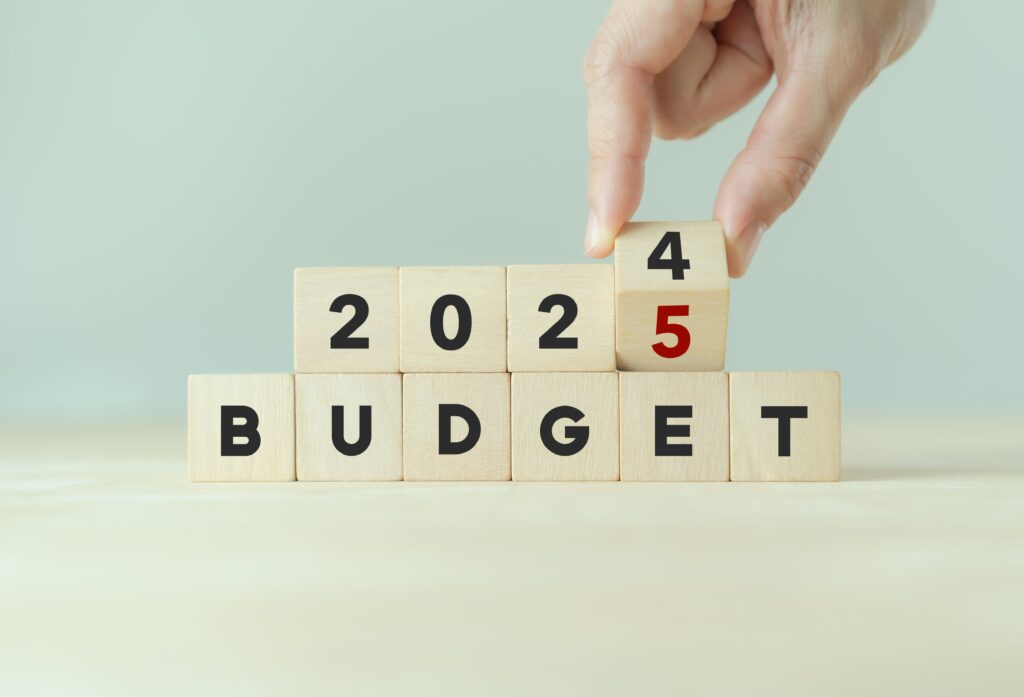Blog
Annual Budgeting and Strategic Planning
ARE YOU GETTING READY FOR ANNUAL BUDGETING AND STRATEGIC PLANNING?
In the blink of an eye, we are already in the third quarter of 2024, meaning it will soon be time for most businesses to gear up for their annual budgeting and strategic planning.
In almost every industry, markets have become more complex and variable, and economic dynamics maintain a high degree of uncertainty for 2025. Setting the financial and strategic tone for the upcoming year should be of vital importance to your organization.
Therefore, whether your company has a very formalized set of processes and meetings for annual budgeting and strategic planning, or takes a more “relaxed” approach, effective preparation could make the difference next year between growth and success or missed opportunities and challenges.
Here are six suggestions for how you should be preparing and getting ready for annual budgeting and strategic planning:
(1) Reflect on the past year
Begin by reviewing performance to date and projections for year end, looking at available financial and operational reports, dashboards of key performance indicators (KPI’s), and any documented assessments of key business initiative project outcomes.
Ask yourself the following questions:
- Did we meet our financial goals?
- What were our biggest successes and failures?
- How did our actual revenue and expenses compare to the budget?
- What were the trends, and what were the factors that drove these trends?
- Were there any unforeseen expenses or revenue streams?
- What current trends might carryover to next year, and should any new or emerging factors be planned for and considered for next year?
This reflection will provide valuable insights into what worked well and what didn’t, forming a foundation for making informed decisions for the next year.
(2) Set Clear Goals and Objectives
Define what you want to achieve in the upcoming year.
If you are functionally focused, think about the goals and objectives for the year, but be mindful that these will need to “ladder up” to broader business goals and objectives, including revenue and profit, so you should have a point of view on what these broader goals should / might / will be, and how your goals and objectives will contribute to achieving them.
All goals should be specific, measurable, achievable, relevant, and time-bound (SMART).
Whether it’s increasing revenue by 10%, launching a new product, or expanding into a new market, having clear goals and objectives will help you guide and contribute to any annual budgeting and strategic planning efforts.
(3) Engage Stakeholders
Any planning and budgeting process should be cross functional, engaging key stakeholders and incorporating different viewpoints. Diverse input and perspectives (backed by solid data) are vital for creating a comprehensive and realistic budget, projecting KPI’s and numbers for next year, and identifying and prioritizing business improvement projects and initiatives.
Whether it is meetings and workshops, or iterating Excel spreadsheets or PowerPoint decks, collaborate with relevant stakeholders to gather input and insights to help you be ready for annual budgeting and strategic planning. The goal is to be a key contributor in ensuring that everyone is aligned with the “end product” outcomes of the plan for next year.
(4) Analyze External Factors
No business operates in a vacuum. Therefore, whether it is analysis of market trends and opportunities, identification of competitive threats, or general assessment of important business assumptions that are somewhat out of your control (such as interest rates, inflation, etc.), incorporating relevant external factors into your budgeting and strategic planning activities is crucial.
Have a summary of the key inputs / outputs of your external factors assessment ready to go for when annual budgeting and strategic planning begins.
(5) Forecast Revenue and Expenses
Detailed situational analysis and well-thought-through goals and objectives are great, but Revenue and Expenses are “where the rubber hits the road.”
Create revenue forecasts based on clearly identified assumptions, ideally considering blends of different scenarios to come up with “optimistic,” “pessimistic,” and “most likely” projections.
Likewise, estimate your expenses, including fixed and variable costs, and don’t forget to account for potential investments in new projects, technologies, or personnel, etc.
Be prepared to walk through and justify your forecasts and projections, and try to ensure that you can update them “on-the-fly” as new information, updated assumptions, and input from other business areas comes in.
(6) Prioritize Initiatives
Many businesses struggle with prioritization: If you have 31 priorities, you don’t really have any prioritization!
Work to differentiate between important activities and projects that need to happen to sustain and deliver “business as usual” versus the one or two (three maximum!) initiatives that are either vital to success or will truly “drive the needle” and have meaningful impact on business performance and achievement of goals and objectives.
Also work with other stakeholders to evaluate the return on investment (ROI) of each and every potential project or investment, understanding that resources are finite and that not every initiative should be a priority, and in fact some should not “make the cut”.
Be ready to make difficult prioritization decisions based on facts, data, and a realistic assessment of organizational bandwidth and capacity for change.
If you spend some time preparing, including relevant parts of these six suggested steps, you should be ready and able to make a significant contribution to your organization’s annual budgeting and strategic planning.
However, if you believe you or your organization needs more help, be it developing a detailed budget, implementing processes, technology, and tools for annual budgeting and strategic planning, establishing monitoring and reporting processes, or communicating goals and plans across the organization to ensure buy-in and alignment, Core Catalysts can help.
To find out more about our Budgeting and Strategic Planning support services, reach out to us today!
-Core Catalysts Team

